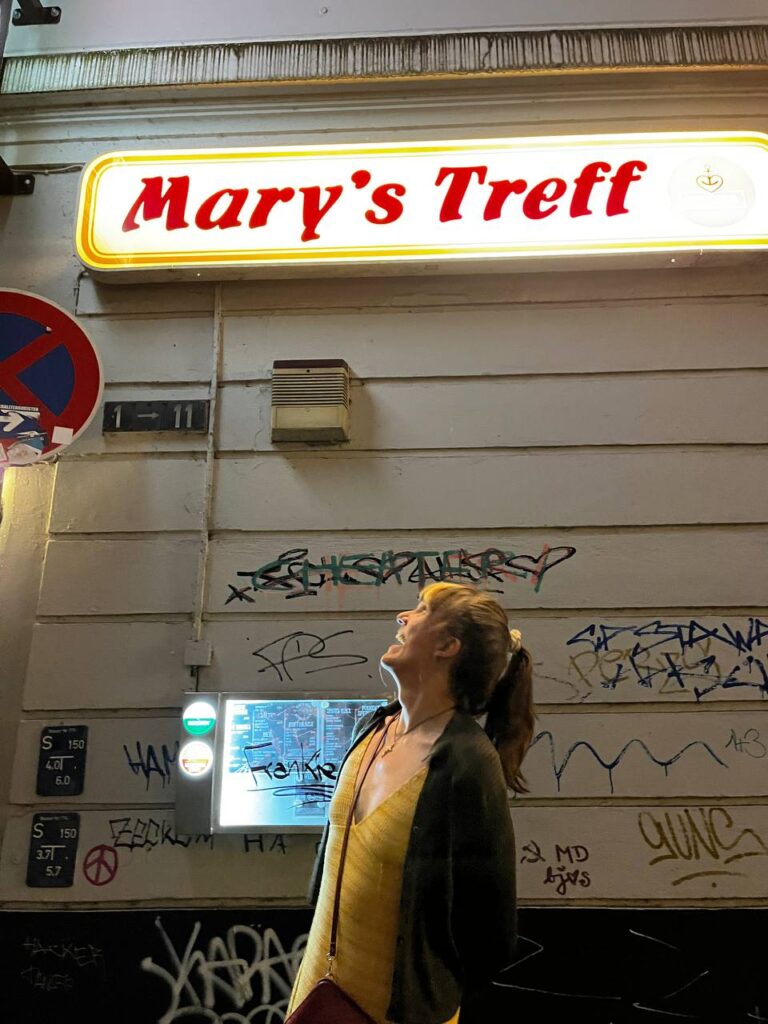Temporary Gallery. Center for Contemporary Art in Cologne is not only an institution, but also a network. In this series, we want to introduce you to the people who are involved in our work and make the realization of our projects possible. Today you will meet Maria Babusch, who, with her reading series HOSPITALITY BETWEEN FOLDS, is creating a literary guest room in the exhibition by Kinke Kooi and Roland Schimmel that takes up and expands on the theme of folds.
Interview: Nelly Gawellek
July 2025
Dear Maria, with your reading series, you are one of the collaborators who expand Temporary Gallery's program. How did you first learn about Temporary Gallery?
Even though I had visited Cologne many times before, I haven't even lived here for two full years yet. So I still remember well how I first noticed Temporary Gallery when I had just moved here. Although it wasn't really that I noticed it. Temporary Gallery is such a central landmark that it would have been impossible to miss. But I only really got to know the place through Lisa Klosterkötter's invitation. Everything I know about it, I know from her.
Your reading series is taking place as part of the exhibition by Kinke Kooi and Roland Schimmel. How did you feel about the exhibition? What thoughts did it trigger in you?
In the exhibition, I experienced a warmth and a feeling of security that immediately appealed to me. These feelings are conveyed in the exhibition space through sensory experiences, such as the carpet underfoot. The works of Kinke and Roland, on the other hand, have an openness that never becomes arbitrary, but rather enables us to recognize something familiar in them. From this aspect, my preoccupation with the theme of hospitality for the reading series developed.
How would you describe the relationship between literature and art? What role does it play in your work?
During the reading series, there were occasionally incredulous voices from the audience: how well literature and art complemented each other here, and why there wasn't more of this, given that it was so obvious. In fact, I believe that literature and art sometimes have difficulty connecting, despite their mutual respect and admiration. The languages in which they express themselves are too different. In my opinion, however, it is precisely their differences that bring them together and enrich each other. Art has always been able to express things that cannot be represented in literature. At the same time, literature can express things that only flit through art in images.
Did you have a favorite book as a child? If so, which one? When did you first want to become an author yourself?
As a child, your favorite book is often the one you are currently reading. So you are lucky enough to be able to look back on a long list of favorite books. I'll pick out the first book I read myself: “The Little Vampire.”
Unless you come from a family with the right background, being an author or artist has long been considered not a “real” profession. That's why it wasn't until I was a teenager that the idea of working as an author began to take shape in my mind. But I started writing much earlier than that. Even before I could write, I began folding A4 pages in half and writing as many wavy lines as possible on the inside pages with my mother's ballpoint pen. Of course, only I knew the content of those first texts.
Do you have any reading recommendations for the summer holidays?
The summer holidays are the ideal time to tackle larger reading projects. Most of them have been sitting on the shelf for years anyway, so you don't even have to buy anything new. Even if the vacation isn't long enough to finish the book, by the time you get home you'll be so immersed in the world of the text that you'll automatically integrate the book into your everyday life. So whether it's Middlemarch, The Magic Mountain, or the Jacob novels: leave room in your suitcase for a thick tome!
Is there an exhibition or work of art—no matter where—that has impressed you recently?
It was a loan from the Centre Pompidou that recently caught my eye when I visited the Hamburger Kunsthalle on a weekend and entered the exhibition, and it moved me deeply: Giorgio de Chirico's portrait of Guillaume Apollinaire. I was already familiar with the painting, mainly from the cover of the special edition of Gustav René Hocke's “Die Welt als Labyrinth” (The World as a Labyrinth): a study of Mannerism that provided me with key inspiration for my work on the motif of the fold.
